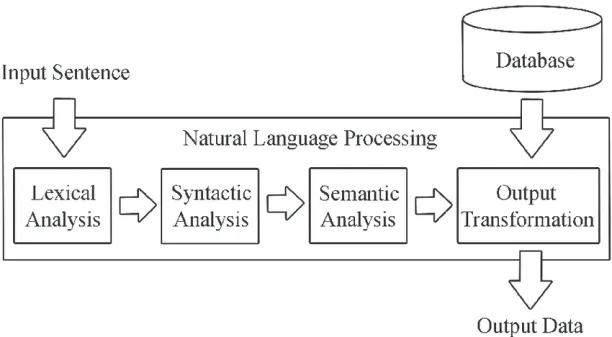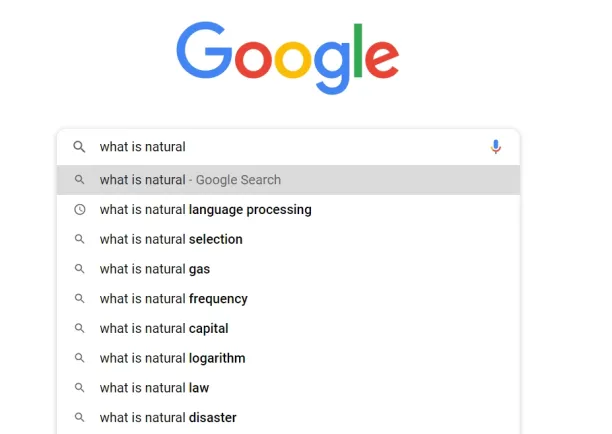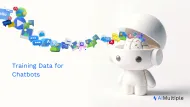Complete Guide to NLP in 2024: How It Works & Top Use Cases
Natural Language Processing (NLP) is the reason applications autocorrect our queries or complete some of our sentences, and it is the heart of conversational AI applications such as chatbots, virtual assistants, and Google’s new LaMDA.
The global natural language processing (NLP) market was estimated at ~$5B in 2018 and is projected to reach ~$43B in 2025, increasing almost 8.5x in revenue. This growth is led by the ongoing developments in deep learning, as well as the numerous applications and use cases in almost every industry today.
In this article, we provide a complete guide to NLP for business professionals to help them to understand technology and point out some possible investment opportunities by highlighting use cases.
What is Natural Language Processing?
Natural Language Processing (NLP) is the AI technology that enables machines to understand human speech in text or voice form in order to communicate with humans our own natural language.
The first cornerstone of NLP was set by Alan Turing in the 1950’s, who proposed that if a machine was able to be a part of a conversation with a human, it would be considered a “thinking” machine.
Soon after, different applications emerged, such as ELIZA in 1966, which was the first healthcare chatbot imitating a psychotherapist using pattern matching and response selection.
Later in 1971, the Defense Advanced Research Projects Agency (DARPA) used NLP for Robust Automatic Transcription of Speech (RATS) for performing tasks related to speech-containing signals received over communication channels that are extremely noisy and/or highly distorted.
Applications like this inspired the collaboration between linguistics and computer science fields to create the natural language processing subfield in AI we know today.
How does NLP work?

In general, NLP techniques include 4 major steps:
- Lexical Analysis: The process of splitting a sentence into words or small units called “tokens” in order to identify the meaning of it and its relationship to the entire sentence.
- Syntactic Analysis: The process of identifying the relationship between the different words and phrases within a sentence, standardizing their structure, and expressing the relationships in a hierarchical structure.
- Semantic Analysis: The process of relating syntactic structures, from the levels of phrases, clauses, sentences and paragraphs to the level of the writing as a whole, to their language-independent meanings.
- Output Transformation: The process of generating an output based on the semantic analysis of the text or speech which fits the target of the application.
Depending on the NLP application, the output would be a translation or a completion of a sentence, a grammatical correction, or a generated response based on rules or training data.
In modern NLP applications deep learning has been used extensively in the past few years. For example, Google Translate famously adopted deep learning in 2016, leading to significant advances in the accuracy of its results.
What are the top 5 use cases of NLP?
NLP enables computers to understand and generate human speech, therefore it has numerous applications. Here are some of the top use cases of natural language processing:
1. Grammar/spelling check
Earliest grammar checking tools (e.g., Writer’s Workbench) were aimed at detecting punctuation errors and style errors. Developments in NLP and machine learning enabled more accurate detection of grammatical errors such as sentence structure, spelling, syntax, punctuation, and semantic errors.
Grammar check is done by 3 methods:
- Rule-based: This method relies on linguistic experts designing accurate rules for splitting text, assigning part of speech (PoS) tags, and checking against “matching” rules to identify errors.
- Machine learning based: This method relies on supervised machine learning algorithms trained on large datasets to enable them to perform a statistical analysis on a sentence and detect errors based on previous examples.
- Hybrid: This method is a combination of rules and machine learning techniques to improve the performance of the system. It typically leverages rules for standard grammatical errors (e.g. “a” or “an” usage) and ML for semantic analysis of sentences.
2. Translation
Modern translation applications can leverage both rule-based and ML techniques. Rule-based techniques enable word-to-word translation much like a dictionary.
ML, on the other hand, enhances the overall translation of a sentence or a paragraph by understanding the overall meaning of the input sentence, generating a word-to-word translation, and tweaking the output according to training data to produce an accurate translation.
3. Chatbots
Chatbots are a type of software which enable humans to interact with a machine, ask questions, and get responses in a natural conversational manner.
Chatbots depend on NLP and intent recognition to understand user queries. And depending on the chatbot type (e.g. rule-based, AI-based, hybrid) they formulate answers in response to the understood queries.
Interest in chatbots has increased almost 5 times over the period of 5 years, and they have been rising in popularity due to their numerous benefits and diverse applications in almost every industry such as hospitality, banking, real estate, and retail.
Chatbots can also integrate other AI technologies such as analytics to analyze and observe patterns in users’ speech, as well as non-conversational features such as images or maps to enhance user experience.
4. Sentence completion

One of the most popular applications of NLP which we use everyday is sentence completion. This application combines NLP with some machine learning algorithms, such as:
- Recurrent neural networks (RNN): RNN algorithms are typically used in deep learning applications. They simulate the activity of human brain neuron connections which learn from recurrent events. Recurrent neural networks recognize data’s sequential and temporal features and use patterns and feedback loops in order to predict the next likely scenario of a word or sentence.
- Latent semantic analysis (LSA): LSA algorithms rely on analyzing the relationship between speech tokens. The algorithm will separate a sentence or paragraph into tokens, create a relationship-matrix between them to understand the pattern of token occurrences with each other, and predict the following sentence based on the distributional hypothesis which states that: “words which are close in meaning will occur in similar pieces of text”.
More simple methods of sentence completion would rely on supervised machine learning algorithms with extensive training datasets. However, these algorithms will predict completion words based solely on the training data which could be biased, incomplete, or topic-specific.
A recent example is the GPT models built by OpenAI which is able to create human like text completion albeit without the typical use of logic present in human speech.
5. Data analytics
Analytics is the process of extracting insights from structured and unstructured data in order to make data-driven decision in business or science. NLP, among other AI applications, are multiplying analytics’ capabilities. NLP is especially useful in data analytics since it enables extraction, classification, and understanding of user text or voice.
What are the challenges of NLP?
Natural language is hard. Even as human, sometimes we find difficulties in interpreting each other’s sentences or correcting our text typos. NLP faces different challenges which make its applications prone to error and failure.
Some of the major challenges of NLP include:
- Sarcasm
- Phrase ambiguity
- Slang or street language
- Domain-specific language
- Bias in training data
However, these challenges are being tackled today with advancements in NLU, deep learning and community training data which create a window for algorithms to observe real-life text and speech and learn from it.
For more on NLP
NLP is the cornerstone of conversational AI. To learn more about conversational AI, feel free to read our in-depth articles:
- Top 5 Expectations Regarding the Future of NLP
- NLU vs NLP: Main Differences & Use Cases Comparison
- Conversational AI, Core Chatbot Tech of 2021: In-Depth Guide
- Top 10 Voice Recognition Applications in 2021
If you are looking to benefit from a conversational AI application, scroll through our data-driven lists for:
And we can guide you through the process:
This article was drafted by former AIMultiple industry analyst Alamira Jouman Hajjar.

Cem has been the principal analyst at AIMultiple since 2017. AIMultiple informs hundreds of thousands of businesses (as per similarWeb) including 60% of Fortune 500 every month.
Cem's work has been cited by leading global publications including Business Insider, Forbes, Washington Post, global firms like Deloitte, HPE, NGOs like World Economic Forum and supranational organizations like European Commission. You can see more reputable companies and media that referenced AIMultiple.
Throughout his career, Cem served as a tech consultant, tech buyer and tech entrepreneur. He advised businesses on their enterprise software, automation, cloud, AI / ML and other technology related decisions at McKinsey & Company and Altman Solon for more than a decade. He also published a McKinsey report on digitalization.
He led technology strategy and procurement of a telco while reporting to the CEO. He has also led commercial growth of deep tech company Hypatos that reached a 7 digit annual recurring revenue and a 9 digit valuation from 0 within 2 years. Cem's work in Hypatos was covered by leading technology publications like TechCrunch and Business Insider.
Cem regularly speaks at international technology conferences. He graduated from Bogazici University as a computer engineer and holds an MBA from Columbia Business School.
To stay up-to-date on B2B tech & accelerate your enterprise:
Follow on

Comments
Your email address will not be published. All fields are required.